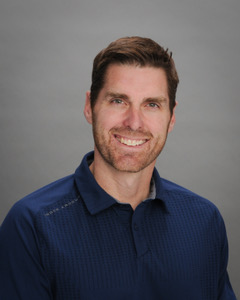
Burnout is a growing situation that has been slowly undermining the productivity of physicians and their staff. And in recent years, it’s gotten worse as demands from patients, documentation, and regulatory requirements increase.
Adding to the situation are challenges related to added technology, the need to be virtual and to meet patients where they are, and the need to keep up with constantly changing information and landscape in terms of what our patients need from us.
Kirk Davis, executive director of operations at Dignity Health, calls it time poverty, as the demands on physicians increases, calling for more time in the office and less time spent at home with family, tipping the scale of work-life balance toward burnout.
Those who become physicians go into medicine because it gives them meaning and a sense of purpose. Yet many feel that their altruistic reasons have been washed out of the field of medicine, which has become very robotic and documentation centric as relationships with patients are de-emphasized. Adding to the mix are the challenges of RVUs, which determine reimbursements for services provided, and it’s easy to see how much of the work physicians perform seems unrelated to patient care.
Distracted Doctors
I compare the application of technology in medicine to distracted drivers and their cell phones. Cell phones are great, but when behind the wheel, drivers should be focused on the road and not texting and doing silly things that would keep them from being safe.
And I think in many ways, our physicians and staff are distracted clinicians. They have technology that’s barking at them and asking them to pay attention and look at tasks and alerts and information. And during the pandemic, we added video visits, forcing physicians to fumble with another layer of technology to interact with patients but distancing them even more in some ways.
On top of this, add in the demands of EHRs—electronic health records—and documentation; it’s no wonder our docs are distracted. More clinicians are retiring early, switching professions, reporting burnout and depression, and even committing suicide.
Can Technology Lessen the Burden?
The promise of technology in medicine certainly makes sense. We see it in other industries, making it more efficient to book travel, look up a restaurant and figure out where we’re going to eat or buy movie tickets, or whatever it is in our lives that has been made a little bit more accessible and easier to do.
And yet, in healthcare, it feels like the promise of technology hasn’t quite hit it yet. We’re a little bit behind other industries. Businesses were already conducting video teleconferences, but pre-COVID, virtual visits were only being piloted on a tiny scale. The pandemic forced clinicians to embrace virtual visits quickly. And while virtual visits are not the solution for every patient, it’s a solution for many, as providers and patients utilize the available technology to make the pathway for patient-provider contact easier.
Are Algorithms Replacing Experience?
On the one hand, technology does make patients safer. Data-driven programs provide predictive modeling, and some physicians use drop-down menus to make decisions. But when do years of training and experience outweigh algorithms? When data replaces experience, does it take the meaning from the work as physicians lose the sense that their training and experience are relevant? At what point does a physician rely on their training and experience and not the data? We’re still trying to figure that out.
But at the end of the day, we’re still treating unpredictable humans who may be facing stressors contributing to their condition, which the computer can’t account for.
As humans, we have this unique ability to take a lot of complex data and bring it together and find the nuance in all of that. And I think that computers, technology, and automation can do some of the heavy lifting work. And when we pair that with our unique humanness, we can arrive at a patient-centric diagnosis for the person sitting across from us versus a generalized answer.
The Electronic Health Record
In no place has technology expanded to meet documentation and regulatory demands more than the EHR. From the Dictaphone and transcriptionists to voice to text, voice to transcription into the EHR, to the use of scribes—we’re seeing greater use of technology to work in the EHR.
Technology has helped clinicians stay up to date on charting instead of working late and having stacks of incomplete paper charts on their desks.
Patients are embracing this technology as well because it’s improving access, it’s speeding up care, and probably most importantly, it’s making things convenient for them. Because all records are a click away, there’s never the risk of a misplaced chart. And a physician on call has access to charts while at home.
Technology can support the work-life balance.
Technology can make it easier for patients to see their clinicians and make them feel more comfortable. Technology can help fill staffing shortages. And technology can help physicians work at the top of their licenses and work with patients in the way we want to. If we incorporate the right tech into our day-to-day, it becomes a blessing.
In my opinion, technology is our North star, and we need to embrace it.
About David Lundquist, MD
In December 2019, Dr. Davin Lundquist joined Augmedix as Chief Medical Officer. In this role, Dr. Lundquist drives rapid technological innovation across Augmedix’ product development teams while maintaining clinical excellence and tight alignment with the ever-changing US healthcare landscape. Dr. Lundquist’s portfolio includes introducing next-generation natural language processing automation modules into the Augmedix workflow and advancing Augmedix’s real-time support systems prompting doctors to close care gaps and tend to other critical quality initiatives. Dr. Lundquist also supports the company’s commercial efforts as it expands its footprint among major US healthcare systems.
